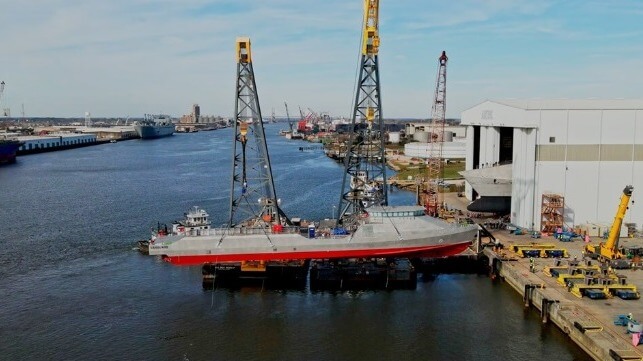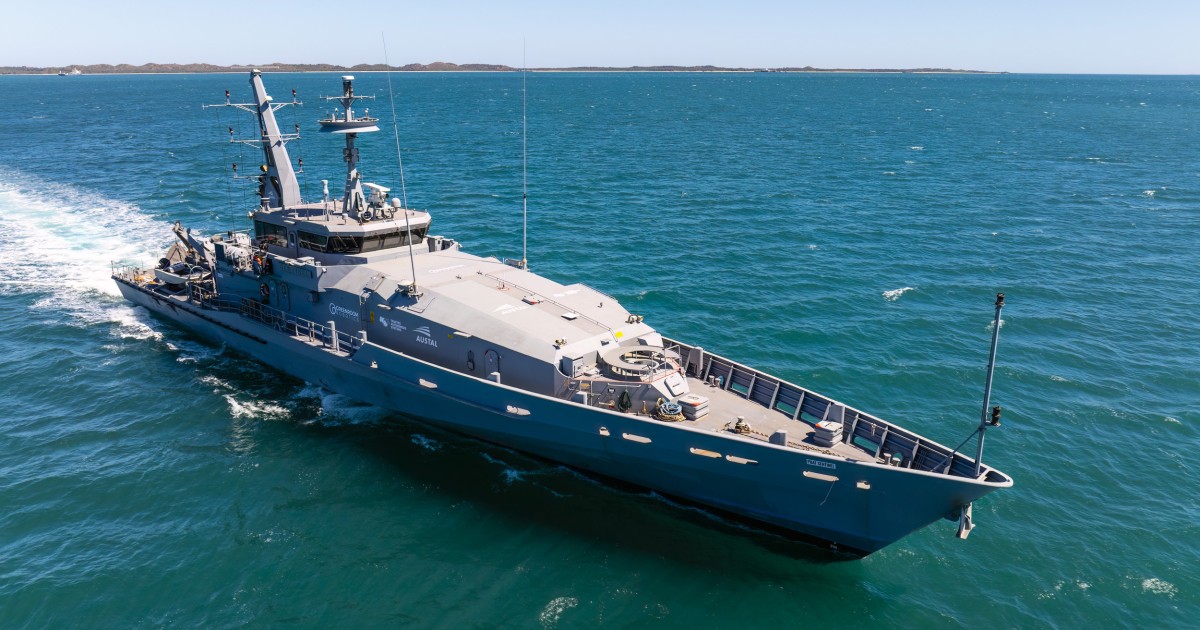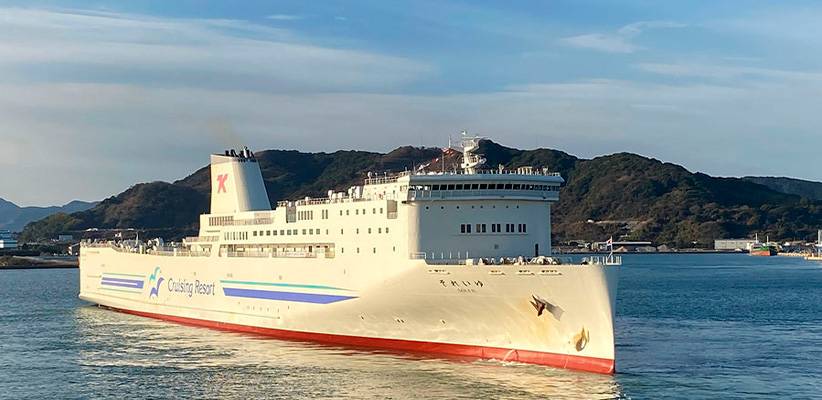- Reaction score
- 8,493
- Points
- 1,160
Further to.
The USN maintains an organization called SURFDEVGRU 1. It is the home for the Zumwalts. They are now, functionally, testbeds for good idea fairies to play with.
SURFDEVGRU 1 is also responsible for USVRON 1 and USVRON 3.
USVRON 3 has just been stood up (17 May 2024) under a Captain. It comprises 400 sailors focused on operating a powered sUSV of 16 ft called the Global Autonomous Reconnaissance Craft.
Other sUSV programs are covered by Task Force 59 (Task Group 50.1) and by the USMCs LRUSV program.
SURFDEVGRU 1 also manages USVRON 1, previously known as USVDIV 1. That unit, under a Commander, has taken part in RimPac 2022 and Autonomous Warrior 2023. In both cases the exercise are extended from California to Australia by way of Hawaii, Japan and the First Island Chain.
USVRON1 has taken over from the Overlord Ghost Fleet program. It currently manages three OSVs (Ranger and Mariner (193ft) and Vanguard (<200ft)), and 2 Sea Hunter class MUSVs (Sea Hunter and Seahawk). Sea Hunter is a 2016 DARPA build and Seahawk is a Leidos build from 2021.
Ranger and Mariner are sister ships delivered in 2021 with Mariner being delayed in service while it was outfitted with a virtual Aegis capability. Vanguard is a new build Austal design based on lessons learned that only hit the water this January.
Ranger and Mariner are Fast Crewboat OSV conversions based on the previous Riley Claire that was commissioned as the Nomad. The Nomad transited the Panama Canal in October 20 from east to west, 4421 nautical miles. It is reported that the crossing was 98% Autonomous.
On Sep 4 2021, while still under the Ghost Fleet, the USV Ranger, a 193 ft OSV, launched an SM6 missile from a Lockheed Martin mk 70 Payload Delivery System (a 40 ft ISO Sea Can) mounted on its cargo deck.
This is in keeping with the aims of the LUSV programme, to get more missiles into the fight.
...
On 13 January 2022 the Ghost Fleet was transferred to the USN and stood up as USVDIV One. USVDIV One took part in RimPac 2022 with Nomad, Ranger, Sea Hunter and Seahawk under command. Other assets included MQ-8B Fire Scouts and MQ-9A/B Sea Guardians.
Comments were generally about the payloads and how to integrate the weapons and sensors into the common engagement system. The ships seemed to behave themselves in terms of keeping station and staying out of the way.
USV Mariner, Ranger's sister, which was fitted with the Aegis system, might have answered some of the integration issues was too late for the RimPac 22 party. It joined USVDIV One on 24 Aug 2022.
...
On 7 Aug 2023 a USVDIV One flotilla, under the command of Independence class LCS-24 Oakland, an Austal built trimaran, departed California with Ranger, Mariner, Sea Hunter and Sea Hawk in company. It transited by way of Hawaii and Yokosuka (21 Sep 23), Guam, the Marshall Islands and Papua New Guinea, arriving in Sydney on 24 Oct 23. The flotilla took part in exercise Autonomous Warrior 2023 with the RAN, concluding on 3 Nov 23. The deployment completed on 15 Jan 24 on return to San Diego.
The four vessels sailed a combined 46,000 nautical miles, and stayed in autonomous mode almost all of the time. Human crews were on hand to intervene when needed, but this was infrequent, he told USNI. About once every two weeks, an intervention would be required for one of the ship's systems, whether mechanical systems, comms links or autonomy systems.
The autonomy suite only had to be deactivated 13 times for all four vessels over that time period. “We’re having to actually have a human step in and correct the autonomy less than one time per month," Searles told USNI.

U.S. Navy Launches its First Purpose-Built Midsize USV
Austal USA has launched the U.S. Navy's first purpose-built midsize unmanned vessel, Vanguard, Naval Sea Systems Command announced last week. Vang...
....
Concurrent Activity
9 Sep 2022 - EPF-13 Apalachicola (one of 14 Austal built fast ferries in service with the MSC) was taken into service after passing its autonomous trials.
EPF 13 also completed Unmanned Logistics Prototype trials assessing autonomous capabilities integrated into the shipboard configuration, demonstrating that a large ship can become a self-driving platform.
In transit from Mobile, Alabama, to Miami, Florida, Apalachicola’s autonomous system completed a stress test in high-traffic coastal areas by taking appropriate ship handling actions while operating around other ships, boats, sailboats, and craft. Overall, the ship was in autonomous mode for approximately 85 percent of the multiple day at-sea period.
The future USNS Apalachicola Achieves Milestones with Acceptance Trials and Completion of
The future USNS Apalachicola (EPF 13), the Navy’s 13th Spearhead-class expeditionary fast transport successfully completed Acceptance Trials and Unmanned Logistics Prototype Trials.Acceptance Trials
www.navsea.navy.mil
25 Oct 2023 - LCS-28 Savannah, another Austal trimaran with plant and deck area similar to the EPFs like Apalachicola, launched an SM-6 from a mk70 PDS strapped to its flight deck. This is the same launcher previously employed on the LUSV/OSV Ranger in 2021. This suggests to me that both the LCS and the EPF hulls could meet the requirements of the LUSV programme in terms of bringing more missiles to the fight.
20 Dec 2023 - 720 HR Maintenance Free Run on a Diesel Generator - this milestone was a requirement of Congress to advance funding on autonomous ships.
15 Jan 2024 - Austal Louisiana launches USV Vanguard - its own LUSV design.
....
Current Activity
19 Feb 2024 - RAN announces plan for 6 Large Optionally manned Surface Vessels to be built to the same specs as the USN LUSV requirement.
23 Apr 2024 - RAN and Austal complete the Patrol Boat Autonomy Trials. Austal took over a decommissioned Armidale (Maitland) and refitted it as Sentinel.

Austal Australia completes sea trials for Royal Australian Navy's Patrol Boat Autonomy Trial
MEDIA RELEASE 23 APRIL 2024 Austal Australia completes sea trials for Royal Australian Navy's Patrol Boat Autonomy Trial In a noteworthy development within the Australian maritime sector, the collaborative Patrol Boat Autonomy Trial (PBAT) project has successfully completed Sea Acceptance Trials...
17 Jun 2024 - USN issues an RFI for the delivery of 7 Autonomous OSVs, new or used, from stock or new build, but no new designs, with first delivery 12 months of signing and last delivery in 24 months. Responses required in one week, 7 days.
[td width="171pt"]
The LUSV will deliver adjunct missile magazine capacity to the Fleet as part of the Navy’s Distributed Maritime Operations concept. The LUSV is envisioned to be greater than 200 ft. in length with a full load displacement of approximately 1,500 tons. LUSVs are intended to be low-cost, high endurance, modular USVs that can employ a variety of payloads.
[/td]....
The Aussies are not hanging around to see what everybody else is doing. In addition to building their own missile factories and signing contracts for ESSMs, AIM-120s, MLRS FMOM, Patriots, NSMs and JSMs, they are leading the way on the Loyal Wingman program with the Ghost Bat and on the XLUUV program with the Ghost Shark. I could also point to the Wedgetail and to their involvement in the AUKUS program.
I also note that the same software houses keep showing up on all the new "drone" projects regardless if they fly, swim, float or crawl.
....
Finally, WRT the EPFs, as @Colin Parkinson noted, 12 of the 14 EPFs are being "uncrewed" and put into "extended maintenance". I suggest that that is not the same as being decommissioned, especially if the vessels are capable of autonomous operation. They can keep their windows and cabins and flight decks so that they retain their multi-functional utility. But equally they could sortie as a flotilla, armed with SM6s, under the supervision of manned LCS vessels. The two manned EPFs would make for useful platforms for training and housing the maintainers necessary to keep the vessels functional and ready to deploy from "extended maintenance".
...
5 years. Not 50.




